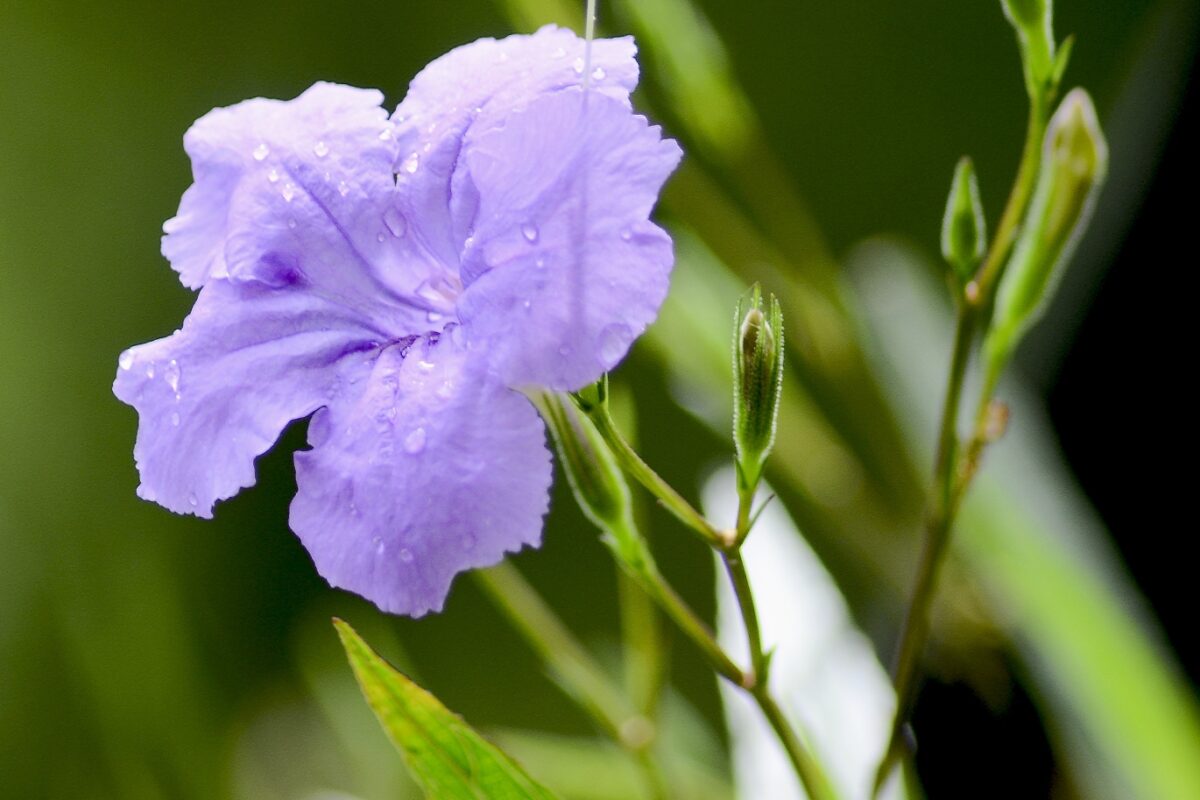Ruellia tuberosa is a flowering plant that is part of the Acanthaceae family, and it has multiple names including minnieroot, feverroot, snapdragon root, and sheep potato. It is native to Central America, despite the acceptance by many countries in tropical South and Southeast Asia of it as a naturalized species. Outdoor plants such as climbers can also be grown.
Ruellia tuberosa is a small, flowering plant from the Acanthaceae family, and it usually grows in humid and shady locations. It grows as a weed in cultivated fields, but mostly in grassland and roadside areas. It is believed that the plant has medicinal properties as well.
| Botanical name | Ruellia tuberosa |
| Varieties | 3 |
| Season | Spring |
| Soil type | Well-drained |
| Soil pH | Slightly acidic to slightly alkaline |
| Sun exposure | Avoid direct sunlight and keep in shade |
| Height | 2-4m tall |
| Maintenance | Low |
| Ideal location for placement | Outdoors |
| Basic requirements | Homemade fertilizer, intermittent watering, and indirect sunlight. |
Uses of Ruellia tuberosa
In the past, Ruellia tuberosa has been employed as a solution for urinary tract infections, fever, pain relief, blood pressure, worm infestation, and nausea for diseases including renal disease, chronic cough, gonorrhea, and syphilis.
Urinary retention can be treated with the use of leaves and roots.
In the Cayman Islands, cardiac conditions are treated with the use of Ruellia.
In Grenada, it is employed to treat high blood pressure, fever, and common colds.
A component of the plant is used in a Dominican Republic drink recipe to increase male libido.
In Sri Lanka, it is used as traditional medicine to address gastrointestinal issues.
In India, scorpion bite wounds were treated with the juice of Ruellia leaves.
How to grow Ruellia tuberosa?
Ruellia tuberosa belongs to the Ruellia genus, a hardy perennial subshrub. Select a spot in your garden that gets a lot of sunlight. Cuttings can be used to propagate Ruellia plants. It’s possible to let it self-seed and then transplant the young seedlings.
Make sure the pruning is clean and sanitary. The blade can be sterilized for this purpose. It helps prevent the spread of diseases or bacteria. Cut four to six stems from the end now. Take a tip for each plant you intend to propagate. Cut below a node, a small swelling where the leaf or stem touches the stem. It is important to have a growth bud on the tip. Select a stem that is healthy. Take out the lower leaves, buds, or flowers.
Now, place the pot or planting medium. Fill a pot that is four inches wide with a mixture of perlite and peat moss. Moisten the mixture. Rooting hormone can be used to dip the cut ends of each stem into it. Rooting hormones help stimulate stem growth. After this, place the cutting into the soil.
Maintenance of Ruellia tuberosa:
It’s easy to maintain and care for this plant. Here are some tips to take into account when growing Ruellia tuberosa at home.
Choose a well-drained and moist soil for the plant.
Warm climates are ideal for the plants to thrive. Wild varieties are capable of surviving winters. Check the soil’s upper surface, up to the first to three inches. If the soil is dry, the plant requires watering.
Ensure that the Ruellia tuberosa plant receives full sunlight exposure. Ruellia flowers are capable of adapting to a lack of sunlight. Proper sunlight is crucial for the best blooms.
The plant requires regular watering. The plant is known to be able to endure drought conditions in soil that has been prepared.
To grow well, the plant requires optimal temperature, humidity, and lighting conditions.




